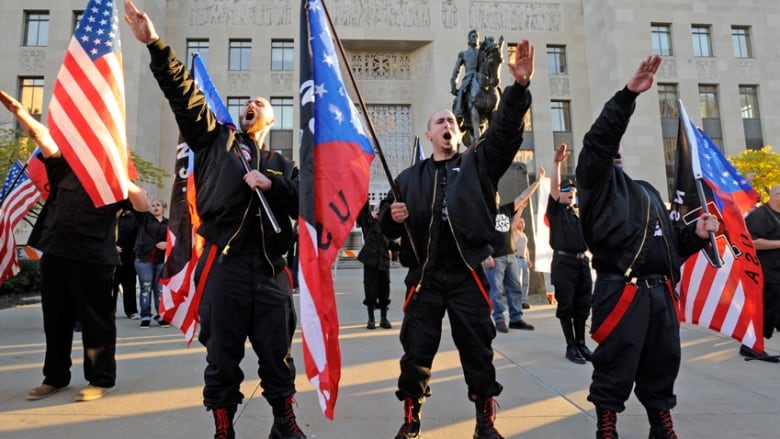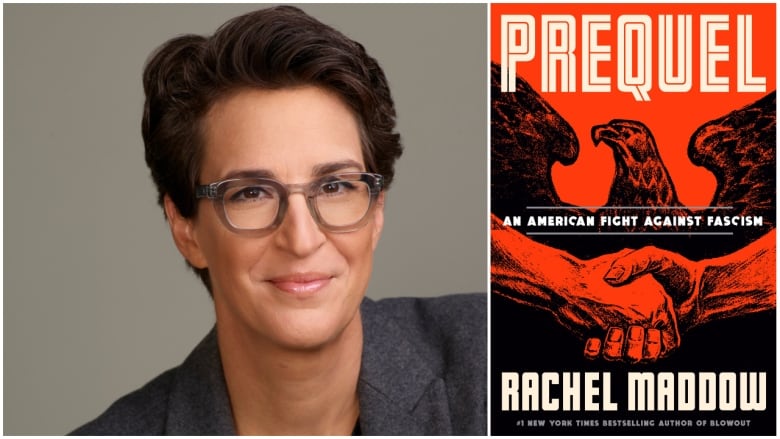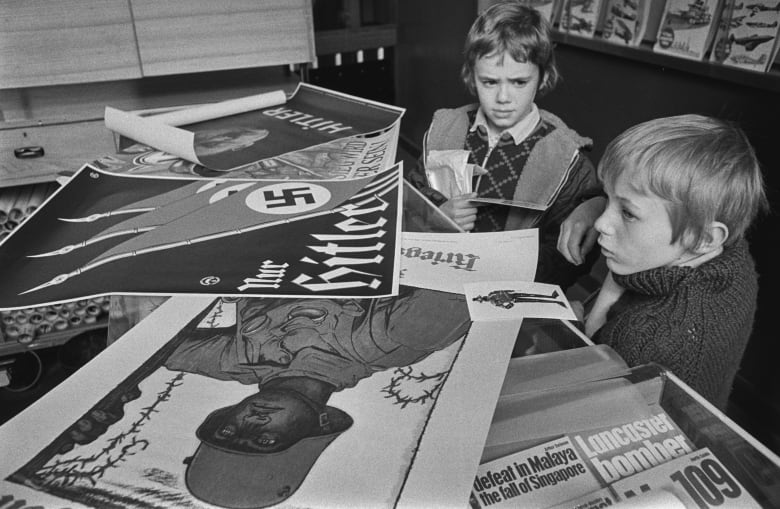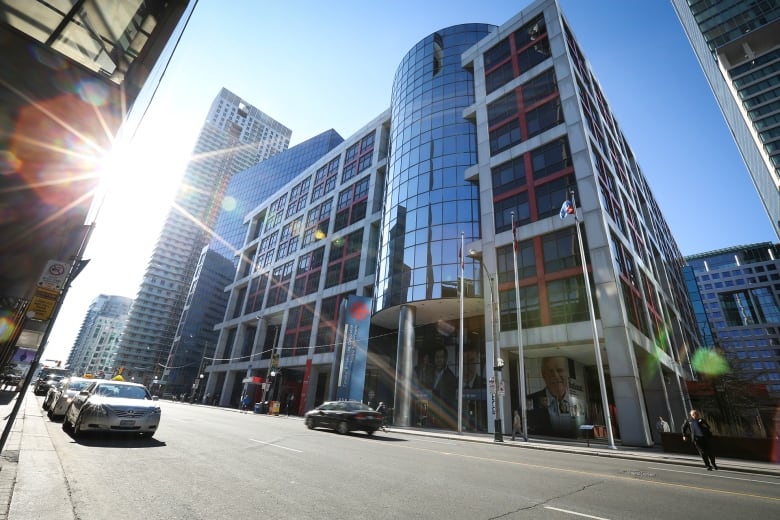How far-right plotters tried to introduce Nazi-inspired fascism to pre-WW II U.S.
'It was a big movement with very powerful, influential people at its helm': Rachel Maddow


With hate crimes increasing and right-wing extremists mobilizing in the U.S., television presenter Rachel Maddow decided to dig into the historical origins behind hate in the country — and what she found was a shocking part of American history she never learned in school.
"We like to think of the World War Two era as us good guys here and those bad guys there, and we went over there and beat them and that was it," the MSNBC journalist told The Current's Matt Galloway.
"That feels great to think of ourselves that way. It doesn't feel as good in some ways to know that there were a lot of Americans who wanted us to side in that war, if at all, with Germany."
According to the FBI's annual crime report, nearly 800 more hate crimes were committed in the U.S. in 2022 compared to 2021. This includes anti-Semitism, which President Joe Biden said rose by 25 per cent from 2021 to 2022.
Maddow found that this isn't new in the U.S., though. In her new book, Prequel: An American Fight Against Fascism, she traces the fight to preserve American democracy against hate back to before the Second World War, when far-right plotters tried to implement Nazi-inspired fascism within U.S. borders.
Maddow spoke to Galloway about what her book uncovers about the U.S.'s history with hate, and how that is connected to the rise of hate in the present day. Here's part of their conversation.
Can I ask you just about the time in which this book lands. It comes at a moment when Jews are fearing and seeing a rise in anti-Semitism. As you watch what's unfolding right now, what's going through your mind?
To me, I feel like it's a little bit of an inkblot test as to what kind of a person you are and what kind of a personality you [have].
To learn that we have been through something like this before, I think for about half of people learning that brings you to despair and you think, "Oh, we're just doing this again. We're never going to escape this."
I think for the other roughly half of people who look at this, you think, well, once you learn we've been through something like this before, it's heartening because you know that we can get through it and there are previous experiences with it to learn from.

I put myself more in the latter camp. I want to know how previous generations of Americans contended with a violent ultra-right that wanted to do away with our system of government, and that was scapegoating minorities and Jews in particular in ways that were really dangerous.
Part of this is about the environment — and you see this now, but you saw this as you're doing the research leading up to the Second World War. What was going on in the United States that created a fertile environment for fascism?
In the 1930s, you saw Weimar Germany becoming Nazi Germany. You saw Benito Mussolini and his fascists take over Italy. France had a very close brush with its own fascist government takeover … You also saw even in Britain, the British Union of Fascists, founded in 1932.
We just saw democracies failing all over the world and the rise of different forms of authoritarian dictatorship — and those winds blowing through Europe were blowing through North America as well. It was an international rise in this sort of fascist ideation.
The thing that is, I think, hard to get our heads around now is that it wasn't a fringe movement, that it was the most powerful people in the country.

It was a big movement with very powerful, influential people, at its helm. We're facing something very dark and very dangerous today. But if we beat those guys … it makes me feel heartened that we can beat back the comparative pikers that we've got to deal with today.
Part of this is about how you write this story … Is there any particular strange character in this that stands out to you?
One of the guys in the United States that a lot of different fascist groups wanted to install as the fascist dictator in the United States if they could overthrow the government, was a retired general named George Van Horn Moseley.
Moseley very much entertained the idea of being this kind of figure in the United States, until the U.S. Army came to him and said, "General Moseley, we understand that you would like to become the Führer of the United States after our democratic system is overthrown by you and your friends. But as long as you continue to agitate for that, we're going to have to pull your pension, because it's awkward for us, as, you know, the army."
He actually kind of stopped doing what he was doing because he didn't want to lose his pension. And you just think how the world might have turned if [he] hadn't been so petty and greedy at such a small scale.
There's also on the good guy side, there's a guy named Henry Hoke, a direct-mail advertising executive who had a lot of expertise in direct mail. With that expertise, he actually sort of went into a very intense one-man investigation to figure out why it was that propaganda produced in Berlin, produced by the Hitler government, was flooding the United States, including through the offices of members of Congress.

There are a number of other figures in the book. One is Philip Johnson. I'm talking to you now from the CBC Broadcasting Centre in downtown Toronto, a building that was partly designed by the American architect Philip Johnson, which is wild in and of itself … What was his role in promoting fascism in the United States?
He was operating in really highfalutin circles in New York arts and culture, while at the same time he was literally going to Germany to go to Hitler Youth rallies and was in close contact with the German government.
He started writing as a correspondent for Father [Charles] Coughlin's publication. He was sent by Father Coughlin's publication to embed with the Germans when they invaded Poland. He wanted to start a fascist pro-Nazi movement here in this country that would install that kind of a dictatorship.
He attached himself for that purpose, first to Huey Long, who was the sort of demagogic governor of Louisiana and then senator from Louisiana, who was then assassinated in 1935. And after his assassination, he attached himself to Father Coughlin and in fact, built a podium, a platform for Father Coughlin in Chicago for use in a speech that for Philip Johnson had been directly inspired by what he saw the Nazis use at their rallies in Potsdam.
How did he not pay a price for that? I mean, he had a pretty good life after trying to bring fascism to the United States, designing buildings … How do you understand how somebody like that goes on to be ostensibly a respectable member of society?
In the epilogue of the book, we have a quote from one of the Rockefeller donors … saying that every every young man should be permitted one large mistake in his life.
Pretty big mistake, but yes.
This is a pretty big one, yeah.

I think the reason that it sort of precluded his rise and indeed his rise to the pantheon of American architects in history, it's because this history is easier to forget than remember.
It doesn't feel as good in some ways to know that there were a lot of Americans who ... wanted that sort of form of government here and are just as violently inclined and just as rabidly anti-Semitic as the people who we told ourselves we fought against and beat.
It doesn't feel as good to remember that, but A, it's worth knowing that this is the truth. And B, it's worth learning from the people who recognised the danger at the time and who fought to expose it.
Produced by Howard Goldenthal. Q&A has been edited for length and clarity.

